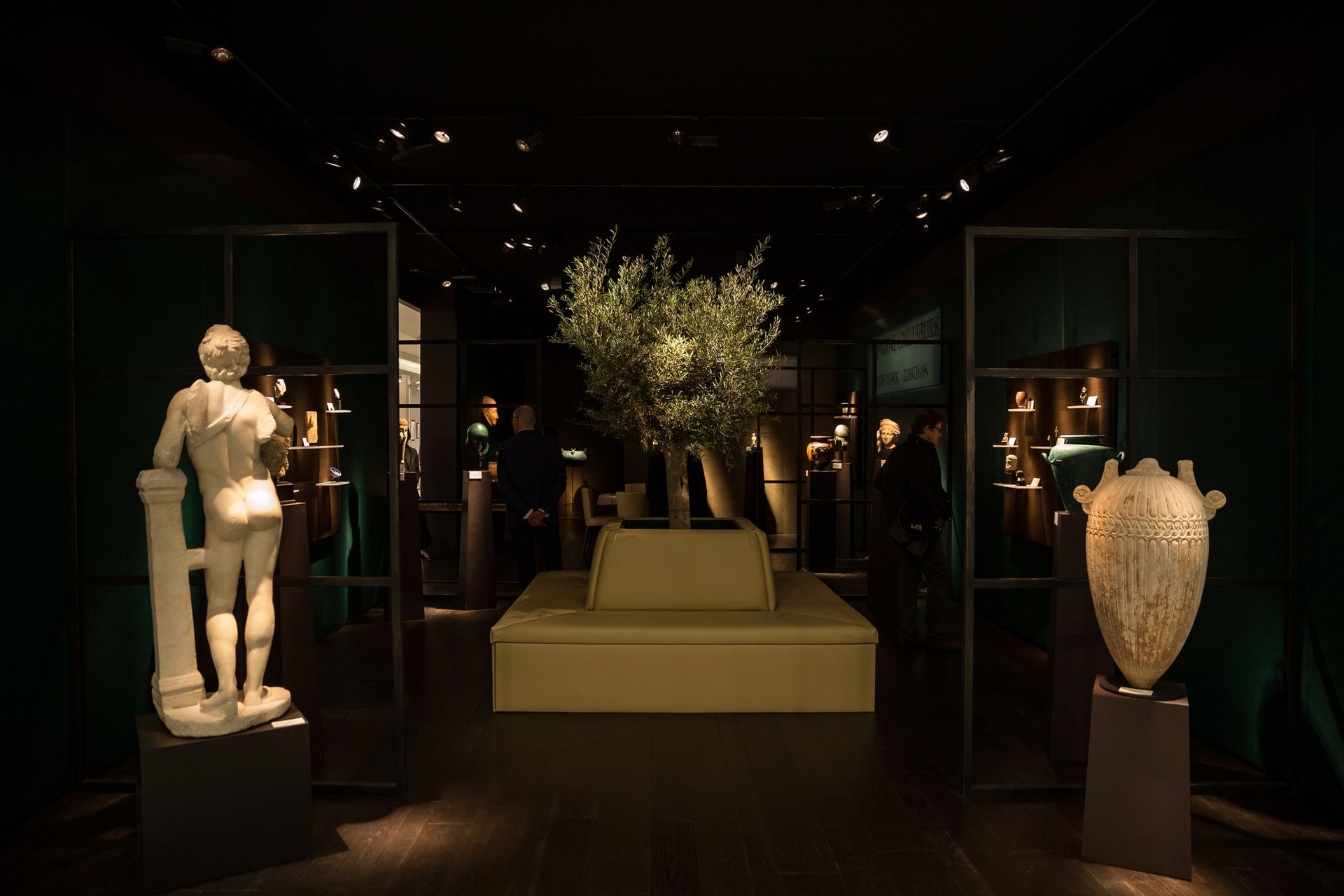Visitors to the eighth edition of Masterpiece, which opens to the public today (29 June-5 July), are welcomed by a very different sight this year: an imposing green neon and mirror installation by the Chilean artist Iván Navarro. Stationed at the entrance, Impenetrable Room (2016) is a reminder of the fair’s sometimes overlooked contemporary offerings.
“It’s a bit out of left field for us,” says Philip Hewat-Jaboor, the chairman of the fair, which is known for its mix of disciplines, with 153 dealers exhibiting everything from Egyptian sarcophagi to Art Deco furniture and Modern British paintings. “But we are a fairly nimble fair and are always aware of the way the market is going.”
Impenetrable Room, which has been commissioned by first-timer Paul Kasmin Gallery and is priced at $900,000, is part of Masterpiece Presents, a new section intended for large-scale displays–contemporary or historical.
Balance is key, says Hewat-Jaboor, who himself is juggling roles since the previous director Nazy Vassegh left at the end of last year (there are no immediate plans to replace her). “I have never seen a distinction between old things and new. For me the two key things are connoisseurship and beauty, after all you don’t want to live with something ugly,” he says.
Design and decorative arts are a cornerstone of the fair. “It’s about presenting art and objects beautifully so that people can understand how you can use them in your house or apartment or yacht,” Hewat-Jaboor says. “Accessible is a ghastly word, but it’s about being accessible.” He notes that the fair is increasingly appealing to the younger generation and is now a mainstay in the diaries of “the 30-year-old banking lot”.
Demonstrating the broad range, Blain|Southern has brought a single work, Bubble Cabinet (2017) by the Dutch designer Jeroen Verhoeven. Created out of borosilicate glass, the work took four years to realise and is priced at £185,000. “It’s a decorative artefact to some extent; it’s a bubble cabinet only in name,” says director Adrian Sutton, noting that the different demographic at the fair (many visiting for the summer season) means the gallery can afford to present something distinctive at Masterpiece.
Ancient art is given the domestic touch at Ariadne Galleries, whose mood-lit booth features upholstered benches and an olive tree. “It’s a real home environment, to a certain degree,” says Gregory Demirjian, the co-president of the gallery. Early sales here include a Corinthian helmet from the sixth century, which sold for a mid-six-figure sum.

Almost unheard of at other fairs, Hewat-Jaboor is encouraging dealers to display prices, with many agreeing. He believes it not only encourages transparency, but also sales. “Asking for prices can put people off before they have started,” he says.
Jonathan Green, the chief executive officer of Richard Green, says his gallery has displayed prices for the past couple of years. “Auction houses do it, so why shouldn't we? It’s about making clients feel comfortable in approaching us,” he says.
The gallery is showing a series of Turner watercolours of Kent and Sussex scenes priced between £550,000 and £950,000, while Constable’s small oil painting, Flatford Lock on the Stour looking towards Bridge Cottage, is available for £2m (on request). However, Green declined to give the price for a 1935 painting by Winston Churchill, which sold on the preview day. “That’s where the transparency ends,” he quips.


